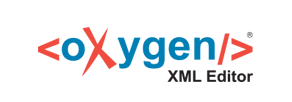Almost thirty years have passed since the explosion of desktop publishing. Advances in computing technology constantly change the capacities of desktop publishing programs. Developers release new versions of familiar programs and replace antiquated tools with new and improved incarnations that often barely resemble their predecessors, and publishers must find a forward-thinking way to preserve their documents without relying on any one program. Tagging a text with an eXtensible Markup Language (XML) has become a necessary part of the publishing process because coding files in XML is a simple way to preserve and repurpose the data in those files. XML is a markup language that defines a set of rules for encoding documents in a format that is both human- and machine-readable. Although coding a manuscript from a word processing file into an XML formatted file can be time consuming, it is a useful step because the application used to produce the original version of the manuscript may not be accessible in the future.
Oxygen XML Editor is one of the many programs that try to solve some of the problems associated with reworking content into XML. Along with related products Oxygen XML author (a simplified version for content authors) and Oxygen XML Developer (for XML development), Oxygen XML Editor is a cross platform application available on all major operating systems like Windows, Mac OS X, Linux, and Solaris, which makes it ideal for organizations that need to manage large projects with multiple authors or editors who manipulate content that may be used on multiple platforms. Oxygen XML Editor allows projects to be broken into individual topics identified as tasks, references, or concepts. The individual pieces are then arranged using a Darwin Information Typing Architecture (DITA) map editor. A DITA map is a container for topics used to transform content created by multiple authors and arranged by multiple editors into a single publishable output. The DITA map gives the topics sequence and structure allowing multiple authors to manipulate project files. Topics associated with the DITA map can then be reused and published into different outputs. For example, the same manuscript could be easily published to the web, mobile, print, and pdf by manipulating the DITA map.
Users do not have to be experts in XML in order to use Oxygen XML Editor, since this program is a visual “what you see is what you get” (WYSIWYG) XML editor and offers visual editing support for a number of XML documentation frameworks. Oxygen XML Editor allows users to toggle through multiple views of the topic depending upon their preferences:

Figure1 shows a project in XML markup

Figure2 shows same project in WYSIWYG
Oxygen allows users unfamiliar with XML to manipulate XML elements through drop down menus predetermined by project managers. Users are able to create and edit topics in XML (and maintain uniform standards) even if the user is not fluent in XML.
The DITA map functions as container designed to hold content in place while authors and editors manipulate the content into its final form. For example, each chapter of a book could be organized as an individual topic, and the designer or editor could be assigned a series of chapters to work on at the same time. This sort of collaboration could save publishers time throughout the publishing process as it reduces the lag time between completed steps. Individual users may not see final designs, but they can still participate in the publishing process.
Oxygen XML Editor also supports change tracking for use with multiple authors and editors much like track changes function in word processors like Microsoft Word. Content managers can track changes made to a manuscript in a review panel. Oxygen XML Editor groups comments and changes made to content in a separate window so it does not muddle the main editing workspace. Editing notes are stored in the document as processing instructions and do not interfere with the actual XML markup.
Oxygen XML Editor (and other versions) is a complete XML development and authoring platform. It provides useful tools for working with a wide range of XML standards and technologies, and it is suitable both for authors beginning to learn XML authoring and for experts. Although the price of the full program ($488) may put it beyond the reach of individuals, it is available by subscription at a rate even small organizations can afford: subscriptions are from six to twelve months and prices vary depending on the package. In short, Oxygen XML is a powerful suite of programs that are easily tailored for an individual organization’s use, which, coupled with reasonable pricing, make it a useful tool for anyone looking to organize their content with XML.

